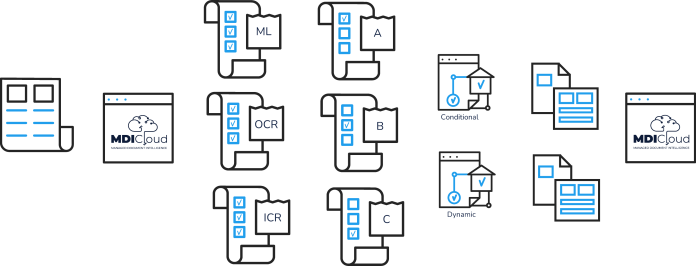Given the challenges public sector organisations face with excessive paperwork, Intelligent Document Processing (IDP) offers a solution to enhance efficiency by automating document capture, extraction, classification, and decision-making
Public sector organisations across the UK face mounting pressure to deliver efficient services, enhance citizen experiences, and accelerate digital transformation. At the same time, they are dealing with an overwhelming volume of paperwork. This places a significant burden on subject matter experts, who must read, interpret, and make decisions on each document. Intelligent Document Processing (IDP) can streamline these tasks, improving efficiency and allowing skilled staff to focus on more valuable work.
Reducing the burden on public sector teams
With tighter budgets, growing workloads, and pressure to deliver services more quickly, traditional ways of handling documents are becoming increasingly impractical. Across councils, healthcare providers, law enforcement, and central government, millions of documents – such as housing applications, benefit claims, procurement forms, and patient records – are still processed manually each year.
This reliance on people to review, sort, and process these documents is slow and costly and places a heavy burden on subject matter experts, who must read, understand, and make decisions on each document. When organisations depend solely on content within documents to inform decisions, experts are under pressure to work quickly. For example, reviewing a single invoice may be manageable but processing hundreds or thousands each month quickly adds up. More complex documents, such as supplier agreements spanning multiple pages, require even more time and attention to evaluate, negotiate, and approve. The same challenges apply across various document types, including business licences, planning applications, court documents, and academic records.
How IDP works
IDP uses a mix of technologies to scan, extract, and organise document information. Here’s how it works:
- Capturing documents: Paper and digital documents are brought into a single system.
- Data extraction: Optical Character Recognition (OCR) and Machine Learning (ML) read documents to identify key details like names, dates, and amounts.
- Classification: Documents are automatically sorted based on their content.
- Routing and decision support: Generative AI understands the context of the extracted information and can flag information for review, send data to relevant systems, and even make decisions based on predefined conditional or dynamic rules.
This means that instead of spending hours reading and inputting data, staff can review a pre-organised summary and focus only on the cases that need human attention.
The real-world impact of IDP
Many organisations are already seeing the benefits of IDP. A great example is the Game & Wildlife Conservation Trust (GWCT), which uses MDI Cloud’s AI Assistant to summarise and extract data to transform its research capabilities. Read the full case study here.
Local councils, for example, deal with a high volume of benefit applications. IDP can automatically check applications for missing information, classify supporting documents, and highlight cases that need review. This significantly reduces processing times and ensures quicker decisions for residents.
Handling case files is a major challenge for law enforcement and the justice system. IDP ensures documents are properly filed and accessible, helping prevent delays in legal proceedings.
Why the public sector needs IDP
Public sector recruitment challenges make automation even more essential. According to the Institute for Fiscal Studies (IFS), only 62% of the target for secondary school teacher training was met in 2023-24. With growing difficulties in hiring and retaining staff, efficiency improvements are critical.
Financial pressures are also mounting. The public sector pay bill reached £270 billion last year, and with budget constraints tightening, reducing admin costs while maintaining service quality is a priority. IDP provides a way to do more with existing resources, cutting unnecessary manual work and improving accuracy.
Procuring IDP via G-Cloud 14
While IDP offers clear benefits, the challenge for many organisations is finding the right technology partner. This is where frameworks like G-Cloud 14, managed by the Crown Commercial Service (CCS), come in.
G-Cloud 14 simplifies the procurement process, allowing public sector organisations to procure pre-approved cloud-based services, including IDP solutions, without lengthy tendering processes.
Benefits of procuring IDP through G-Cloud 14
- Fast and easy access:
- Organisations can browse and select IDP solutions without complex procurement hurdles.
- Cost transparency:
- Pre-negotiated pricing ensures budget-friendly solutions.
- Compliance assurance:
- All suppliers meet government security and compliance standards.
MDI Cloud, a division of Storetec Services, is proud to be an approved supplier on G-Cloud 14, offering award-winning IDP solutions to public sector organisations. MDI Cloud’s Workflow Product of the Year 2024 win at the Document Manager Awards underscores the commitment to driving efficiency through intelligent automation.
The future of public sector digital transformation
With MDI Cloud’s IDP, public sector teams can work more efficiently, reduce errors, and deliver better services to citizens. Instead of being buried in paperwork, staff can focus on their core mission: serving the public.











